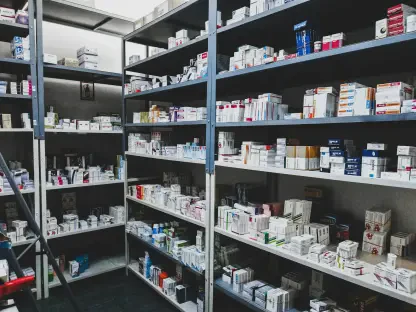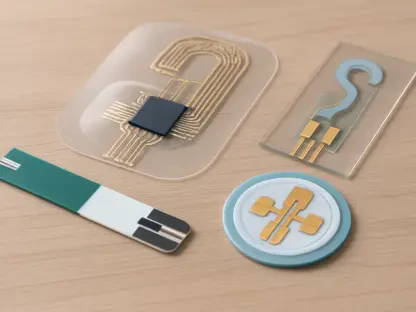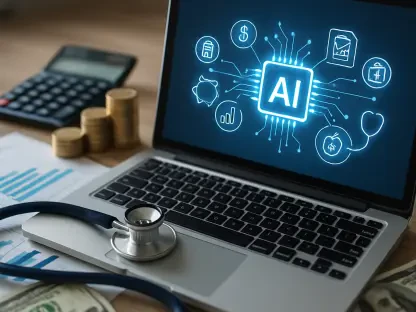Medical imaging equipment services have entered a transformative era, driven by the rapid adoption of artificial intelligence (AI) and remote technologies. This evolution is enhancing the precision, efficiency, and accessibility of services, addressing the critical need for reliable imaging devices in healthcare settings. As these innovations take center stage, stakeholders from across the industry are recognizing their potential to reshape service paradigms. The integration of AI and remote monitoring tools is not merely an incremental improvement; it represents a fundamental shift in the way medical imaging equipment is maintained and operated.
The Role of AI in Predictive Maintenance
AI is making significant inroads into the predictive maintenance of medical imaging equipment. By analyzing vast amounts of data from imaging devices, AI algorithms can forecast potential issues before they evolve into major problems. This capability minimizes equipment downtime, ensuring that imaging devices remain operational and available for patient diagnostics. Predictive maintenance driven by AI not only enhances efficiency but also extends the lifespan of imaging equipment. The ability to predict and prevent malfunctions reduces the need for emergency repairs and replacements, resulting in cost savings for healthcare providers.
Moreover, AI’s impact extends to optimizing maintenance schedules based on actual usage and performance data, rather than following a fixed timetable. This approach ensures that maintenance activities are timely and relevant, further enhancing equipment longevity and functionality. Continuous monitoring facilitated by AI improves the overall reliability of the equipment, ultimately contributing to better patient outcomes. This sophisticated method allows for more tailored and proactive service interventions that keep imaging devices in top condition and ready for use when needed most.
Enhancing Service Efficiency Through Remote Monitoring
Remote monitoring technology is revolutionizing the way medical imaging equipment services are delivered. Through real-time data transmission, service providers can monitor the performance of imaging devices from afar, identifying and addressing issues promptly. This capability is particularly valuable in regions where on-site technical support may be limited. The integration of remote monitoring tools enables technicians to conduct diagnostics and even perform some maintenance tasks without needing to be physically present. This not only reduces response times but also minimizes the disruption to healthcare facilities.
Patients benefit from the consistent availability of imaging services, which is crucial for timely diagnosis and treatment. Remote monitoring also supports proactive maintenance strategies. By continuously tracking equipment performance, service providers can identify trends and anomalies that may indicate an impending failure. This proactive approach helps in scheduling maintenance before issues escalate, ensuring that imaging devices remain in optimal working condition. The cumulative effect of these technologies results in enhanced service efficiency and a higher standard of care for patients.
Key Players Adopting AI and Remote Technologies
Leading companies in the medical imaging equipment services market are at the forefront of adopting AI and remote technologies. Prominent players such as GE Healthcare, Siemens Healthcare, and Philips Healthcare are leveraging these innovations to enhance their service offerings. Their investment in R&D is driving the development of advanced solutions that set new benchmarks for the industry. These companies are integrating AI-driven predictive maintenance and remote monitoring into their service frameworks, enabling more efficient and reliable support for their imaging devices.
The competitive advantage gained from these technologies is evident in improved customer satisfaction and operational efficiency. Smaller players and emerging companies are also recognizing the potential of AI and remote technologies. By adopting these innovations, they can compete more effectively with established firms, offering state-of-the-art services that meet the evolving needs of healthcare providers. This widespread adoption indicates a broader industry trend toward embracing advanced technologies to stay competitive and relevant in a rapidly changing market.
Market Segmentation and Service Diversification
The medical imaging equipment services market is segmented based on the types of imaging devices, including MRI, CT, X-ray, ultrasound, and nuclear imaging equipment. Each segment has unique service requirements, influencing the adoption of AI and remote technologies accordingly. For instance, MRI and CT scanners, which are critical for detailed imaging, benefit immensely from predictive maintenance to prevent unexpected breakdowns. Meanwhile, ultrasound and X-ray systems, often used in high-volume environments, rely on remote monitoring for consistent performance.
Service diversification is also evident in the tailored offerings for different end-users such as hospitals, diagnostic centers, and specialized clinics. These facilities have varying demands and operational constraints, necessitating customized service solutions. AI and remote technologies provide the flexibility needed to address these diverse needs effectively. As the industry evolves, the ability to cater to specific service requirements across different segments becomes increasingly important, ensuring that all healthcare providers can maintain high standards of imaging quality and reliability.
Adapting to Economic Challenges and Future Trends
Medical imaging equipment services are undergoing a significant transformation, spurred by the swift integration of artificial intelligence (AI) and remote technologies. This advancement is not just a simple upgrade; it is revolutionizing how services are conducted by enhancing the precision, efficiency, and availability of medical imaging devices crucial in healthcare environments. Reliable imaging equipment is key to accurate diagnosis and treatment, and these cutting-edge innovations aim to meet these critical demands. Industry stakeholders are increasingly aware of the profound impact these technological advances can have, fundamentally altering service models. The combination of AI and remote monitoring tools signifies more than just incremental progress; it marks a pivotal change in the maintenance and operation of medical imaging equipment. Through AI, issues can be predicted and resolved before becoming significant problems, while remote technologies enable real-time monitoring and quick adjustments. These innovations collectively ensure that imaging equipment remains in optimal condition, thereby improving patient outcomes and operational efficiency across healthcare systems.









